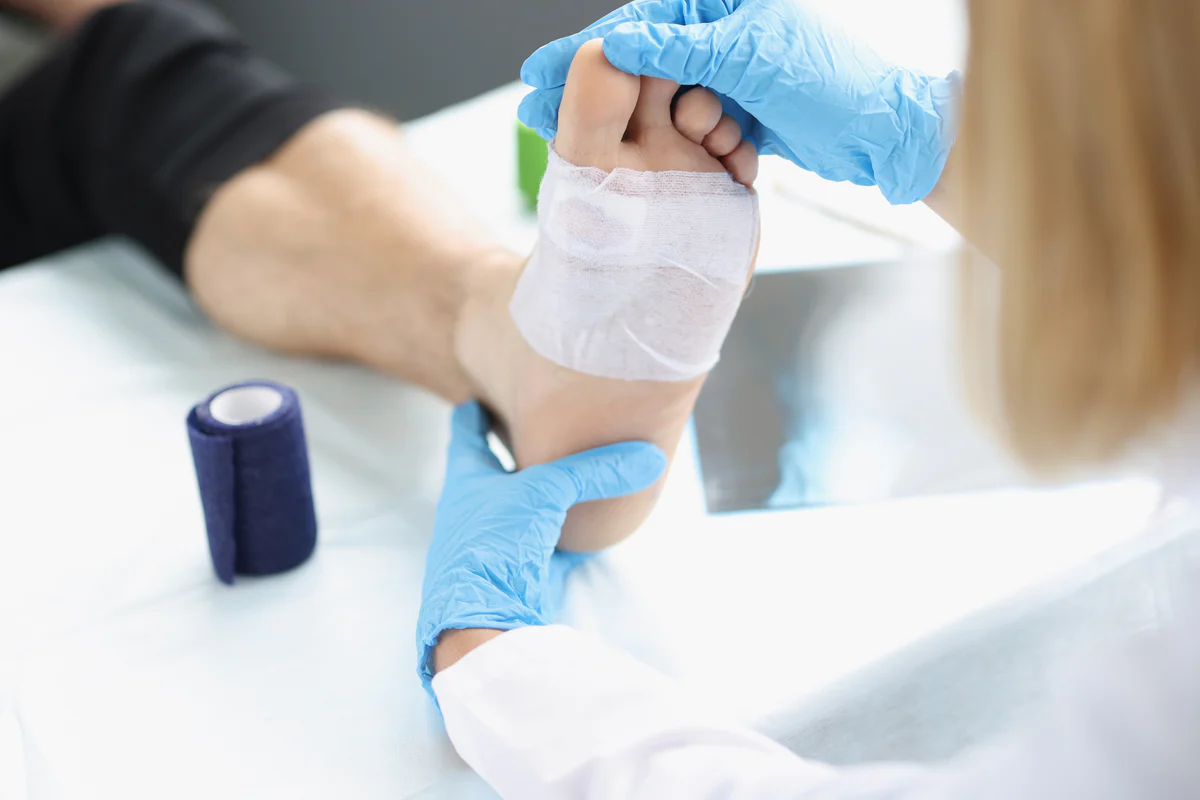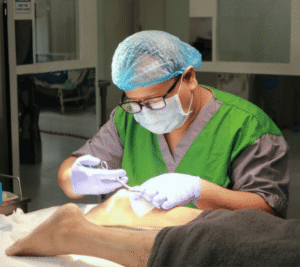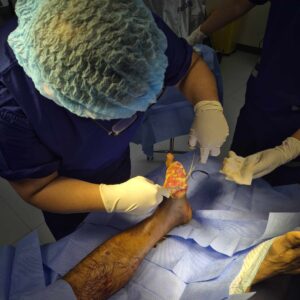When facing the challenges associated with forefoot ulcers, finding the right treatment can dramatically improve quality of life. Comprehensive care, particularly through orthopedic treatment for forefoot ulcers, is essential for reducing pain, alleviating pressure, and enhancing mobility. This article explores everything you need to know—from understanding the condition and its causes to the detailed treatment methods and long-term management strategies that help patients regain comfort and function.
Understanding Forefoot Ulcers
Forefoot ulcers are open sores that develop on the front part of the foot. These lesions often arise from prolonged pressure, friction, or as a result of underlying medical conditions such as diabetes and poor circulation. Recognizing the early signs and causes of these ulcers is crucial for effective treatment and prevention of complications.
What Are Forefoot Ulcers? Forefoot ulcers typically appear on the ball of the foot or around the toes where repetitive stress and pressure occur. The breakdown of the skin and underlying tissues can lead to a non-healing wound, which in severe cases may progress to infection or tissue damage if not managed promptly.
Causes and Risk Factors
- Pressure and Friction: Continuous pressure from ill-fitting shoes or repetitive motions can lead to skin breakdown, especially in areas with minimal protective tissue.
- Diabetes: High blood sugar levels can impair circulation and nerve function, making the feet more susceptible to ulcers.
- Poor Circulation: Conditions that reduce blood flow to the extremities can hinder the healing process, contributing to the development of chronic wounds.
- Neuropathy: Loss of sensation in the feet, common among diabetic patients, may prevent early detection of sores, exacerbating the problem.
Recognizing Symptoms: Early symptoms include redness, swelling, and pain around the affected area. As the ulcer develops, it may exude fluids, and the surrounding skin might become warmer than normal. Recognizing these signs early on can prompt timely intervention, thereby reducing the risk of further complications such as deep infections or gangrene.
The Role of Orthopedic Care in Managing Forefoot Ulcers
Orthopedic treatment for forefoot ulcers is an essential part of the healing process. Orthopedic specialists work to reduce pressure on the affected areas, promote proper wound healing, and support the structural integrity of the foot. Their expertise not only helps in addressing the ulcer itself but also prevents the occurrence of additional problems that may arise from prolonged misalignment or improper weight distribution.
Promoting Healing Through Pressure Relief: One of the key objectives in treating forefoot ulcers is to relieve the excessive pressure placed on the wound site. This can be achieved by using specialized offloading devices, custom orthotics, or specialized footwear designed to redistribute weight away from the ulcer. By alleviating pressure, these treatments create an environment conducive to natural healing.
Enhancing Foot Support: Orthopedic care also emphasizes restoring the proper support and alignment of the foot. Corrective measures can include custom orthotic inserts, braces, or even surgical interventions when necessary. Such treatments help stabilize the foot, ensuring that weight is evenly distributed during movement, thereby preventing further injury and facilitating faster recovery.
Orthopedic Treatment Methods for Forefoot Ulcers
Orthopedic treatment for forefoot ulcers encompasses a range of interventions, from non-surgical methods to surgical options, all tailored to the individual patient’s condition. The chosen treatment plan is often based on the severity of the ulcer, the presence of infection, and any underlying health issues.
Non-Surgical Interventions
Advanced Wound Care and Dressing Techniques: Proper wound care is the cornerstone of treating forefoot ulcers. Advanced dressing techniques not only protect the wound from infection but also maintain a moist environment that encourages cell regeneration. Techniques such as using hydrocolloid or alginate dressings can help manage exudate and promote faster healing.
Debridement and Offloading Strategies: Debridement involves the careful removal of dead or infected tissue to reduce bacterial load and promote the formation of healthy tissue. This procedure is often complemented by offloading strategies that reduce the pressure on the ulcerated area. Devices such as specialized boots or crutches can help offload pressure, thereby minimizing further trauma to the site.
Custom Orthotics and Proper Footwear Recommendations: Using custom orthotics is a critical component in the management of forefoot ulcers. These devices are designed to distribute weight evenly across the foot, reducing localized pressure points that contribute to ulcer formation. Additionally, recommending proper footwear that fits well and offers adequate cushioning can prevent recurring issues.
Surgical Options: For patients with severe or non-responsive forefoot ulcers, surgical intervention may be necessary. Surgical treatments might include procedures to correct deformities, remove infected tissue, or, in extreme cases, reconstruct areas of the foot. The goal is to restore the structural integrity of the foot and eliminate the factors contributing to the ulcer.
Rehabilitation and Physical Therapy: Following any surgical or non-surgical intervention, rehabilitation plays a vital role in recovery. Physical therapy helps restore strength, flexibility, and proper gait mechanics. Through tailored exercises and mobility training, patients can gradually return to normal activities while minimizing the risk of re-injury.
Benefits of Orthopedic Treatment for Forefoot Ulcers
The benefits of targeted orthopedic treatment are numerous and impactful, particularly for those dealing with chronic foot ulcers. Addressing the underlying causes and providing the necessary support can lead to significant improvements in both short-term recovery and long-term foot health.
Effective Pain Management: One of the most immediate benefits is pain relief. By reducing pressure on the affected area and managing inflammation, orthopedic treatments can significantly decrease discomfort. This not only improves the patient’s quality of life but also enables better participation in rehabilitation exercises.
Improved Mobility and Function: Correcting structural issues and supporting proper foot alignment can enhance overall mobility. Patients often experience improved balance and a more natural gait, which is essential for daily activities. Enhanced mobility also contributes to better overall health by encouraging more active lifestyles.
Prevention of Infections and Further Complications: Early and effective treatment prevents the ulcer from worsening, thereby reducing the risk of serious infections. By ensuring that ulcers are properly managed, the likelihood of complications such as osteomyelitis (bone infection) or the need for amputation is significantly diminished.
Enhanced Quality of Life: The combination of pain relief, improved mobility, and reduced risk of complications contributes to a better quality of life. Patients can return to their daily routines with greater confidence, knowing that they are receiving the best possible care for their condition.
What to Expect During Orthopedic Treatment
When beginning orthopedic treatment for forefoot ulcers, understanding what to expect can help alleviate anxiety and ensure a smoother recovery process. The treatment journey generally involves several key stages, from initial diagnosis to long-term follow-up care.
Comprehensive Consultation Process: The first step in treatment is a detailed consultation. During this visit, an orthopedic specialist will assess the ulcer, evaluate the patient’s overall foot health, and review any underlying conditions such as diabetes or vascular issues. Imaging studies or laboratory tests may be ordered to determine the extent of tissue damage and rule out infections.
Customized Treatment Planning: Following diagnosis, a personalized treatment plan is developed. This plan outlines the specific interventions required, whether they are non-surgical measures like advanced wound care and custom orthotics, or surgical procedures in more severe cases. The plan is designed to address both the ulcer and any contributing factors to ensure comprehensive healing.
Ongoing Management and Follow-Up: Long-term management is essential for preventing recurrence. Regular follow-up appointments allow the orthopedic specialist to monitor healing progress, adjust treatment as needed, and provide ongoing guidance for home care. This proactive approach is key to maintaining foot health over time.
Home Care Tips and Prevention Strategies
Managing forefoot ulcers extends beyond the clinic. Effective home care and preventive measures are crucial in supporting the healing process and reducing the risk of new ulcers developing.
Daily Care Routines
- Regular Inspection: Daily checks of the feet help identify early signs of trouble. Look for any changes in color, swelling, or the appearance of new sores.
- Proper Hygiene: Keep the feet clean and dry to prevent infection. Mild soap and water are typically recommended.
- Moisturizing: Use a non-irritating moisturizer to keep the skin supple, but avoid applying it directly on open wounds.
Preventative Measures
- Proper Footwear: Invest in shoes that fit well and offer adequate support. Avoid high heels and shoes with narrow toe boxes.
- Use of Orthotics: Follow the orthopedic specialist’s advice regarding custom orthotics or other supportive devices.
- Pressure Relief: Utilize offloading devices as recommended. These devices help distribute weight evenly and reduce localized stress on vulnerable areas.
Recognizing Warning Signs
While home care is vital, knowing when to seek professional help is equally important. If the ulcer shows signs of infection—such as increased redness, swelling, warmth, or discharge—or if pain suddenly intensifies, consult your healthcare provider immediately.
Takeaway
Forefoot ulcers present a challenging condition that requires a multifaceted approach to treatment. Orthopedic treatment for forefoot ulcers not only addresses the immediate concerns of pain and pressure but also paves the way for long-term healing and improved mobility. Through a combination of advanced wound care, tailored orthotic support, and, when necessary, surgical interventions, patients can experience significant relief and return to a more active, pain-free lifestyle.
By understanding the causes and risks associated with forefoot ulcers, embracing the benefits of specialized orthopedic care, and following a proactive approach to treatment and prevention, individuals can greatly reduce the chances of complications and enhance their overall quality of life.






